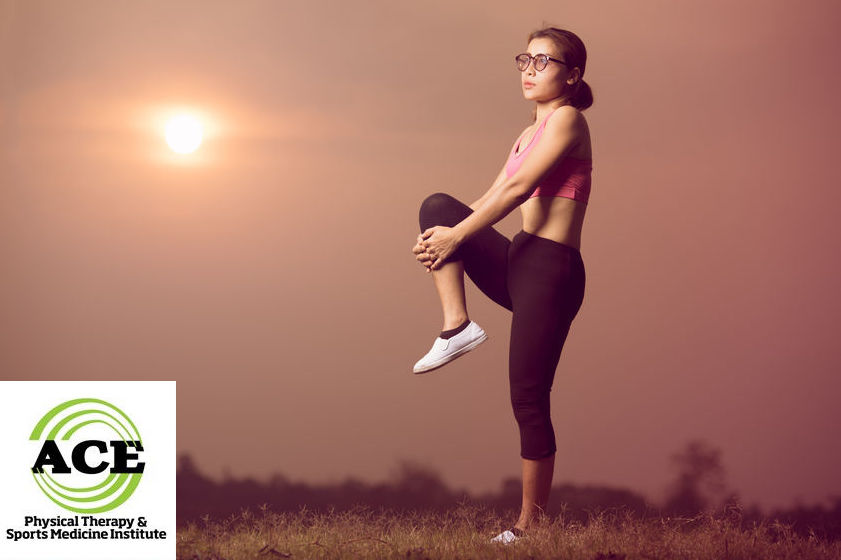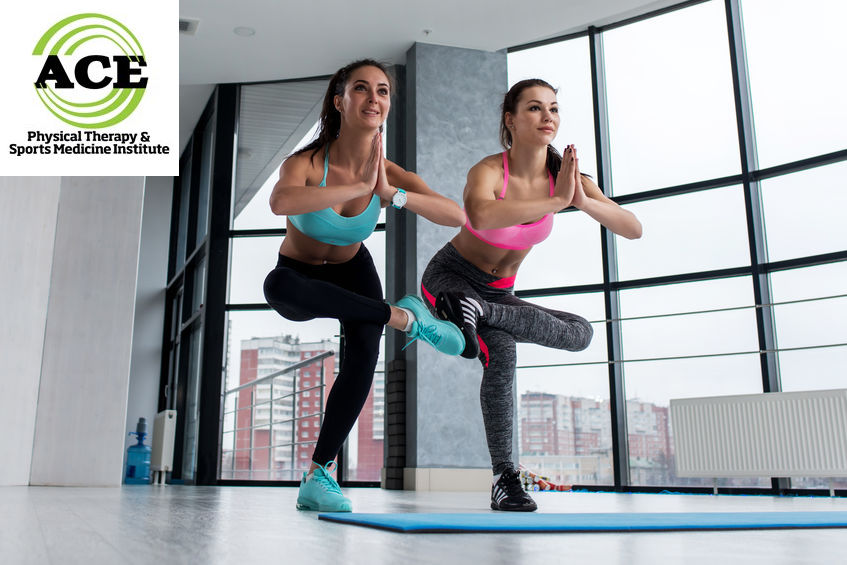THE IMPORTANCE OF STANDING ON ONE LEG IF YOU ARE A RUNNER

Tid Bits of Info
- You should be able to balance on one leg for 20 seconds or more without holding onto anything.
- When walking, you spend approximately 40% of the time on one leg.
- Balance is dependent upon neuromuscular activity and muscular strength.
- Single leg squats help to strengthen your core, hips and lower extremities.
- Seek the advice and treatment from a Physical Therapist if you feel unsteady when you walk or cannot stand on one leg without losing your balance
Reduce the likelihood of running injuries by improving your uni-lateral stance. Simply standing on one leg is an ability that every person, young and old, should be able to perform. While neurological issues can impact balance, strength is the key factor in standing on one foot. Runners can benefit by strengthening the core, hips and lower extremities.
Runners are prone to lower extremity injuries for obvious reasons. Many times a healthcare professional will examine a runner’s injury and determine that the gait is “off” due to abnormal foot and ankle motion. In many instances, these patients are told to buy a particular type of shoe or an insert for their current shoe. In fact, many of these runners are not well conditioned throughout their musculoskeletal system and this can lead to instability and weakness in their lower extremities. Any time patients are weak and lack stability in the core and hips, they are more prone to a lower extremity injury.

The running cycle is measured from the time one foot hits the ground until the same foot strikes the ground again. The middle part or “stance phase” is the time period that causes injuries in the lower extremities. During this phase, the runner’s contact foot absorbs the energy of the impact. If there is an imbalance in the musculoskeletal system, it will show up during the “stance phase”.
Running requires a person to continuously balance on one leg. Any imbalance in strength, flexibility and neuromuscular activity can lead to an injury in one or both legs. Being able to control the core, hips and lower extremities require strength and neuromuscular control. The development of both requires a lot of practice and exercises designed to challenge each leg individually.
If standing on one leg is difficult without using your arms for balance and/or you sway from side to side excessively, you can assume that your hip on that leg is not strong enough to control your body. If you are a runner and your hip is not strong enough to control your body weight during the “stance phase” you are more susceptible to injuring your lower extremity or another body part. The best solution to this problem is to focus a portion of your exercise routine on single leg exercises that are designed to develop strength and increase neuromuscular activity.
If you are “unstable” when you are standing on one leg, seek the advice and treatment from a Physical Therapist. They will assess your strength throughout your musculoskeletal system. Many times injuries that occur in the lower extremities, especially the knees, ankles and feet are a result of a weakness or flexibility issue in the hip(s). When there is weakness, range of motion issues or loss of neuromuscular activity the entire lower extremity can become unstable upon full weight bearing on the involved leg. When instability occurs, soft tissues and joint surfaces are placed under a tremendous amount of stress and strain which can cause an injury to that body part.
Being able to perform a single leg stance without losing your balance is difficult. Performing the proper single leg exercises will enhance the person’s ability to handle their body weight when they are standing on one leg. Runners have to be strong and stable on both legs, but if there is a weakness that leads to instability when they bear weight on a single leg they are most likely going to injure themselves at some point in their running career.
























